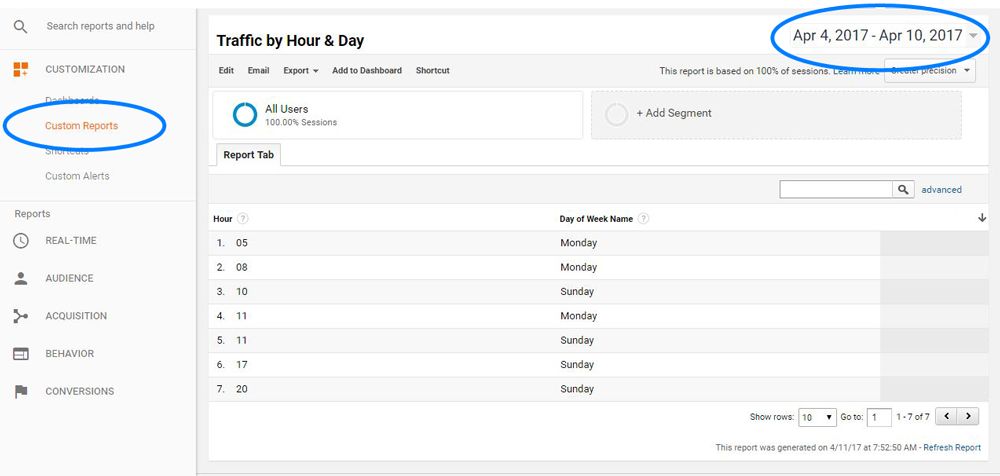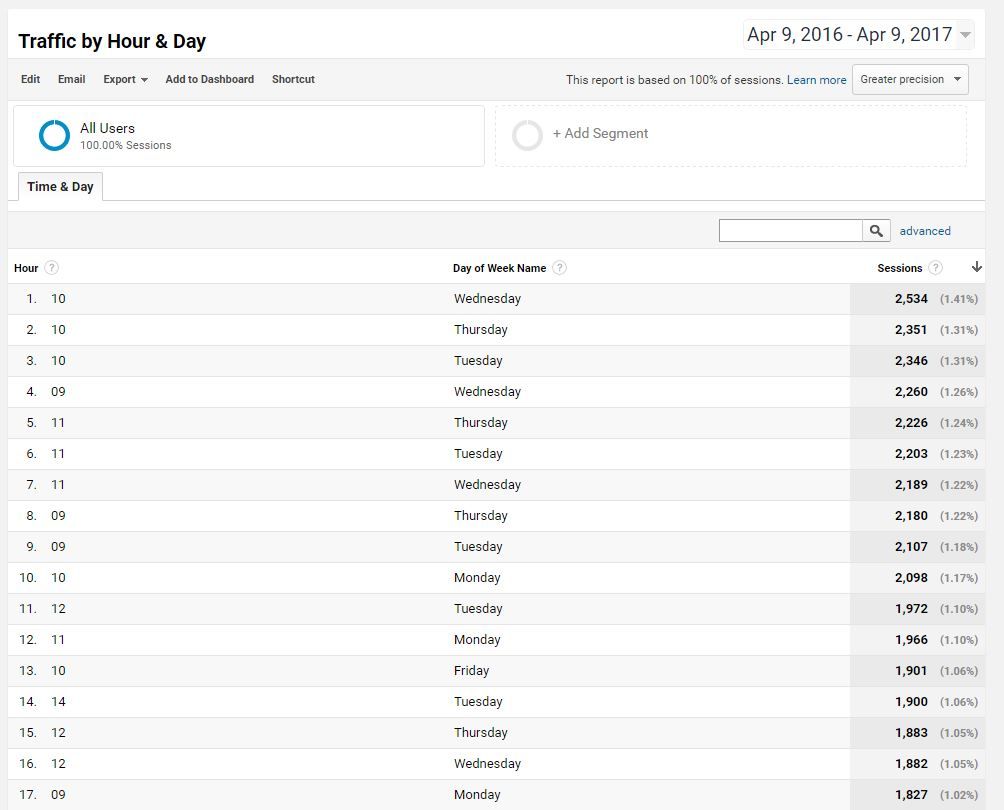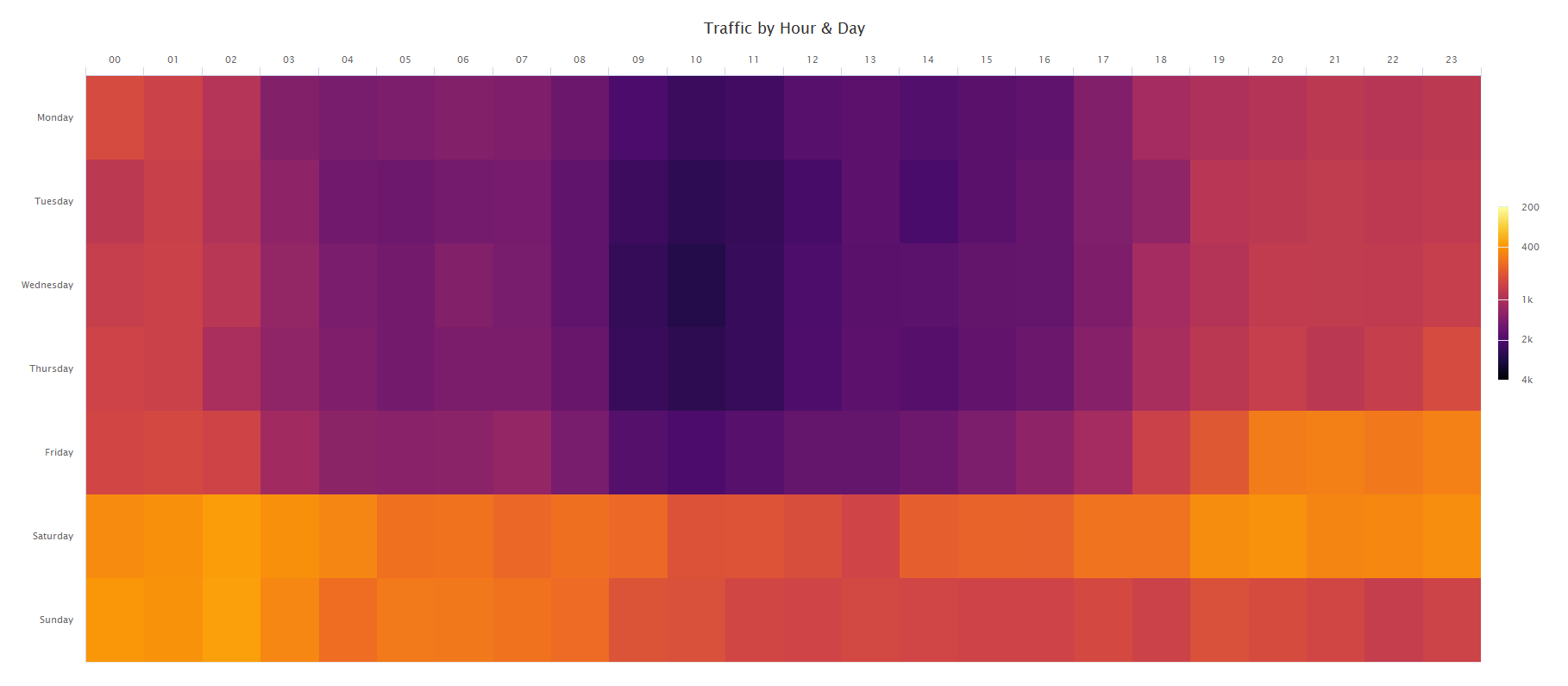One question we’re often asked is: “When is the best time to post on my blog?”
The real answer is…
There is no one-size-fits-all “best” time to post.
Every website is unique and therefore attracts a different audience with unique content consumption habits. Your goal as a business owner or digital marketer is to understand your website, analyze the data, and determine the best course of action.
One benefit of digital marketing is maintaining access to troves of website statistics and information. We can find answers to common questions by exploring our website’s analytics data.
If you have Google Analytics on your site (and you should), with a little bit of work we can uncover the right days and times to attract visitors to your site via your blog.
Jump on over to Google Analytics:
Custom Analytics Report
Login to your Google Analytics Account and apply this custom report to the appropriate view.
This report will give you quick access to a chart that breaks down your site’s traffic by hour of the day and day of the week.
To access this report in the future, go to Customization >> Custom Reports >> Traffic by Hour & Day.
Then, set an appropriate date range so you have a significant sample size.

Quality Content Will Prevail
Develop high quality content that serves as a resource for your audience. With proper content promotion, your blog will gain traction through social sharing and organic search traffic.
If you’re unclear on what content to create, research what your customers are searching for and craft content that addresses their needs. Utilize basic on-page SEO and content promotion to help improve visibility of your post.
Longevity of Content
If your content is time-sensitive (if it’s centered around a particular event, for example), it can tend to have a fairly short shelf life. When this is the case, the timing of when you actually publish the post can play a big role in its ultimate success (or lack thereof).
However, if your post is considered evergreen, and can therefore serve as a resource for blog visitors for months and even years to come, the timing of the publishing may not impact success so drastically.
When You Share
Monitor your social networks to determine when your content receives the most attention in the form of likes and shares. If you have a strong presence across multiple platforms, timing your social share schedule properly could be more important than when the content itself hits the blog.
Sharing patterns also may vary across different platforms. Instagram tends to be more evening and weekend-oriented, while Twitter is more of an all-day affair. You can uncover some of this data by integrating social interaction tracking within Google Analytics.
Wrapping Up
Applying these simple metrics can help maximize your digital marketing success. Over time, developing an understanding of data-driven marketing and analytics will help you make more educated marketing decisions.
If you’re curious about growing your digital marketing strategy or need help capitalizing on SEO, Google Analytics, or content development, feel free to comment below or give us a call!





